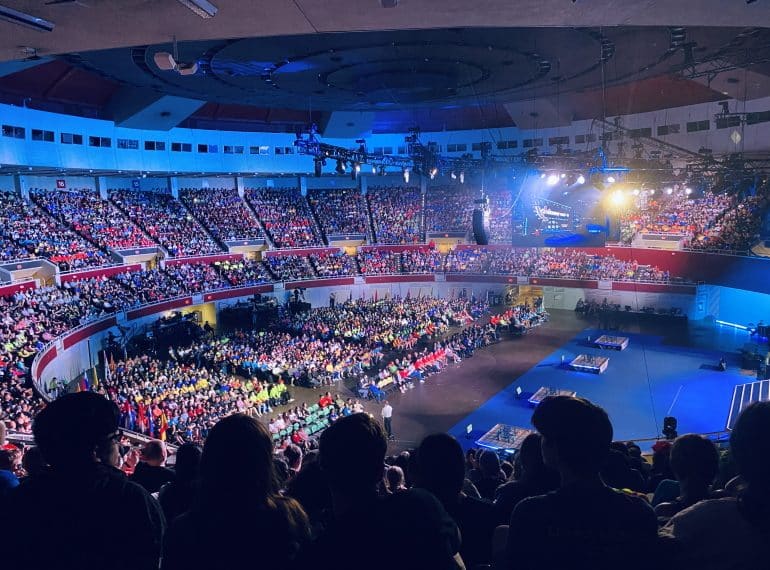
QE had the joint-highest number of teams of any school or organisation at the huge 2022 Vex Robotics World Championships in Dallas, where the 48-strong contingent picked up a string of awards.
One of the QE senior teams made strong progress, at one point single-handedly carrying British hopes when they reached their divisional semi-finals, while the junior teams picked up a string of awards in their competition.
Eight teams made the 4,750-mile journey from Barnet to Texas after gaining their places through multiple successes both in the season’s domestic fixtures and at the UK national championships in April.
After the boys proudly joined other UK competitors in the parade of nations in front of almost 10,000 people in the Kay Bailey Hutchinson Convention Center, the two senior (VRC) Year 10 teams got down to competition in the first in-person world championships to be held since 2019.
Teams Hybrid and Vortex Invicta competed in the Engineering and Arts divisions respectively – just two of the seven senior divisions, each of which comprised 70-80 of the best robotics teams in the world.
After a day of set-up, practice and scouting both of alliance partners and opposition alliances, both teams began the competition with some strong tactical driving resulting in some high-scoring wins: at the end of the first day of play, Hybrid had amassed four wins and only two losses, while Vortex three wins and three losses.
Head of Technology Michael Noonan said: “What seemed to boost the chances of both our teams was that, in the face of opposition from more experienced teams using robots with more functionality, they just kept their tactics simple.”
By the end of day two, both teams had five wins and five losses, and both were ranked 40th. Hybrid were then among the teams to be selected as alliance partners by a divisional finalist, in their case the eighth-ranked team.
“What followed was a tense victory for Hybrid over good friends and local rivals GCA Gearers (from Greig City Academy, Hornsey) in the round of 16, presenting the sole win in this stage of competition for a senior QE team to date,” said Mr Noonan.
This success, however, meant they next faced the top seeds. The team duly threw themselves into the challenge. “Using fast reactions and excellent tactics Hybrid and their partners, Robohawks, took control of the match, taking possession of the game elements and pressurising their opponents…What resulted as a nail-biting finish, where the highly fancied opposition could not ‘balance their platform’ (normally a significant bonus) – and Hybrid had successfully qualified for the divisional semi-finals on a score line of 136-85 – then a best result for UK teams in VRC competition.
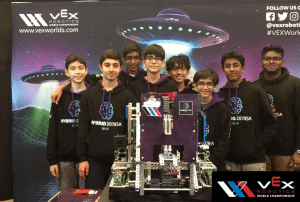 “The final stages of the match were met with rapturous applause from UK supporters…and Hybrid were suddenly the great hope of UK teams and mentors,” Mr Noonan said. “With this, confidence levels in the team grew, and they swatted the semi-final challenge of a once-again higher-ranked alliance with ease, with a score of 163-76.” Their “fairy-tale journey” then came to an end as they lost out to a very high-scoring alliance.
“The final stages of the match were met with rapturous applause from UK supporters…and Hybrid were suddenly the great hope of UK teams and mentors,” Mr Noonan said. “With this, confidence levels in the team grew, and they swatted the semi-final challenge of a once-again higher-ranked alliance with ease, with a score of 163-76.” Their “fairy-tale journey” then came to an end as they lost out to a very high-scoring alliance.
“They were more than happy with their lot at the end of the competition – a divisional runner-up and Judges Award represented a fantastic outcome for the team.”
With ten divisions, the VIQC competition for the Year 8 and 9 teams was even bigger. The first day saw most of the six teams hit the minimum required score of 120 to be in the top 30 of their divisions, and at the end of the day “an incredible four of the six teams” had qualified for divisional finals.
First up was the Rubber Bands team: even though their alliance partner’s robot suffered technical difficulties, they still managed a respectable score of 108 points. Next came Nova, who shot to the top of their rankings with a “fantastic” 142. Shattersquad achieved 133, while Gearsquad scored 114.
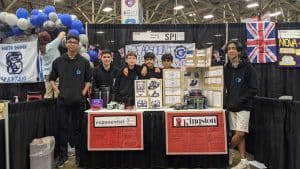 “All teams put in an incredible effort, but none managed to secure that coveted prize of a place in the world finals,” said Mr Noonan. Nevertheless, Gearsquad won an Inspire Award and a top-50 place for Skills, while Nova, Cyberforce, Rubber Bands and Eclipse all secured online challenge awards.
“All teams put in an incredible effort, but none managed to secure that coveted prize of a place in the world finals,” said Mr Noonan. Nevertheless, Gearsquad won an Inspire Award and a top-50 place for Skills, while Nova, Cyberforce, Rubber Bands and Eclipse all secured online challenge awards.
“A trip up Dallas’s Reunion Tower with a handful of silverware and a chest-load of memories topped off a fantastic day,” said Mr Noonan.
The boys and five accompanying staff also find time during their trip to sample delicious Tex-Mex food, visit the Perot Museum of Science and Nature and take in other Dallas sights.
Year 8’s Jeevan Karthick Thiyagarajan said later: “Travelling to the USA as a group was a great experience, particularly since we missed several trips earlier due to the pandemic. It was almost like we played dual roles – hard-working robot engineers during the mornings and fun-loving tourists in the evenings!”
Advay Bhat, also of Year 8, added: “Going to the Worlds and representing QE and the UK has taught me how to stay determined, focused and resilient. I met many people from different countries and backgrounds with different ideas, and the experience has truly been one of the greatest I’ve ever been through.”

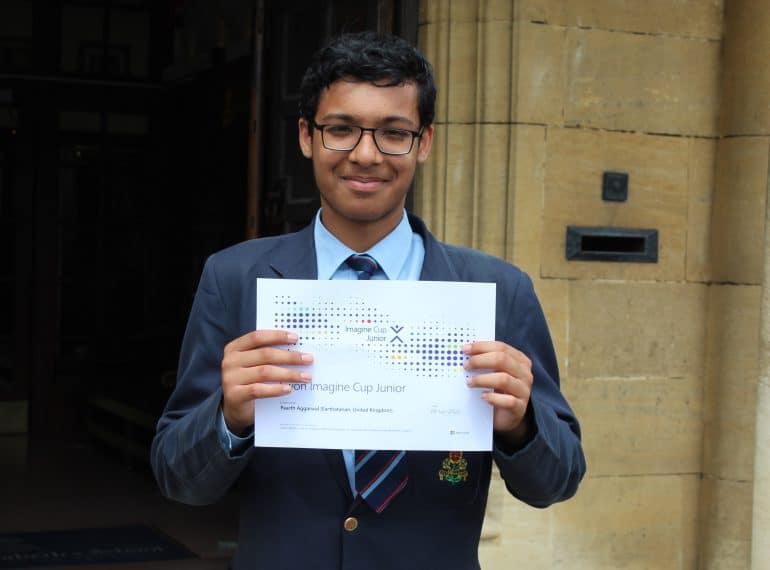
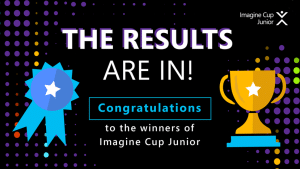 The competition, which challenged participants to submit creative ideas to solve some of the planet’s biggest issues using the power of artificial intelligence (AI), attracted thousands of entries from around the world.
The competition, which challenged participants to submit creative ideas to solve some of the planet’s biggest issues using the power of artificial intelligence (AI), attracted thousands of entries from around the world.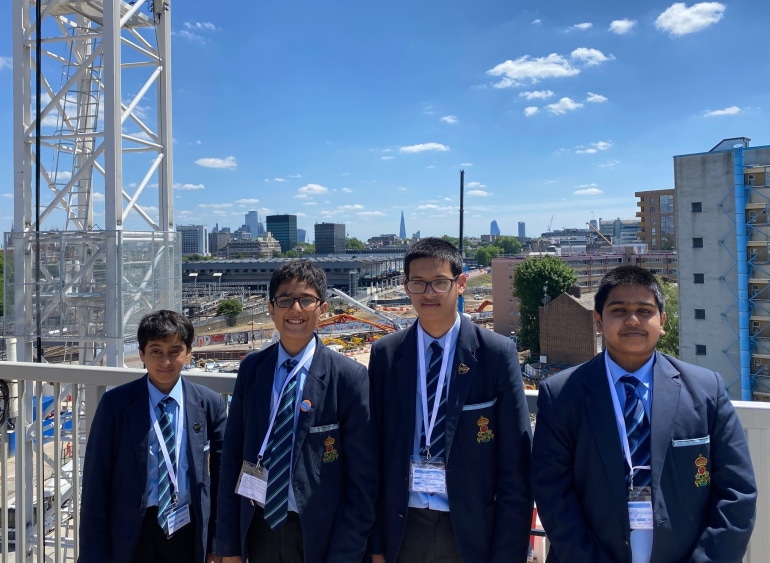
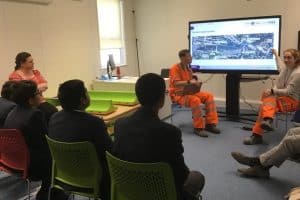 In the event, their visit was to one of the UK’s biggest current civil engineering sites. Euston Station will be the London terminus for HS2 and will double the seat capacity for trains leaving Euston during peak hours. The plans include a ‘seamless’ connection between the Northern, Victoria, Circle, Hammersmith and City and Metropolitan lines at Euston. The project forms part of a regeneration scheme in central London spanning 60 acres.
In the event, their visit was to one of the UK’s biggest current civil engineering sites. Euston Station will be the London terminus for HS2 and will double the seat capacity for trains leaving Euston during peak hours. The plans include a ‘seamless’ connection between the Northern, Victoria, Circle, Hammersmith and City and Metropolitan lines at Euston. The project forms part of a regeneration scheme in central London spanning 60 acres. “The trip to HS2 was fascinating and gave me a very useful insight into the day-to-day life of a civil engineer,” said Snehal. “I also learned how they impact our lives everyday by improving transport networks throughout the UK.’
“The trip to HS2 was fascinating and gave me a very useful insight into the day-to-day life of a civil engineer,” said Snehal. “I also learned how they impact our lives everyday by improving transport networks throughout the UK.’ 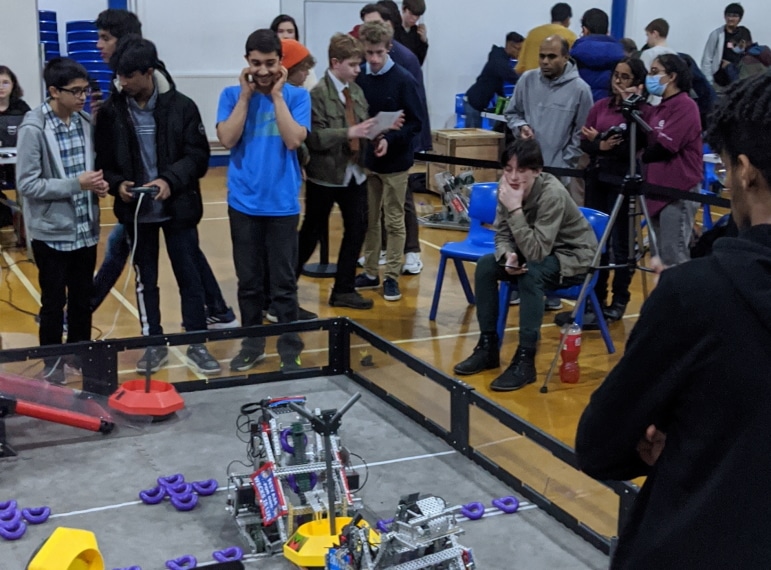
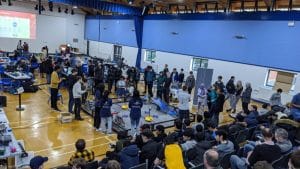 Congratulating them, Headmaster Neil Enright said: “Our robotics teams march on to ever-greater success, thanks to their technical skills, teamwork and great commitment.
Congratulating them, Headmaster Neil Enright said: “Our robotics teams march on to ever-greater success, thanks to their technical skills, teamwork and great commitment.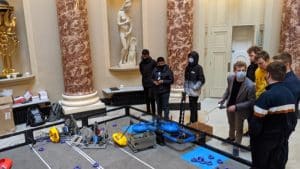 While examination commitments prevent Year 12 from travelling, IQ teams from Years 8 and 9 VRC competitors from Year 10 will all be heading for the States.
While examination commitments prevent Year 12 from travelling, IQ teams from Years 8 and 9 VRC competitors from Year 10 will all be heading for the States.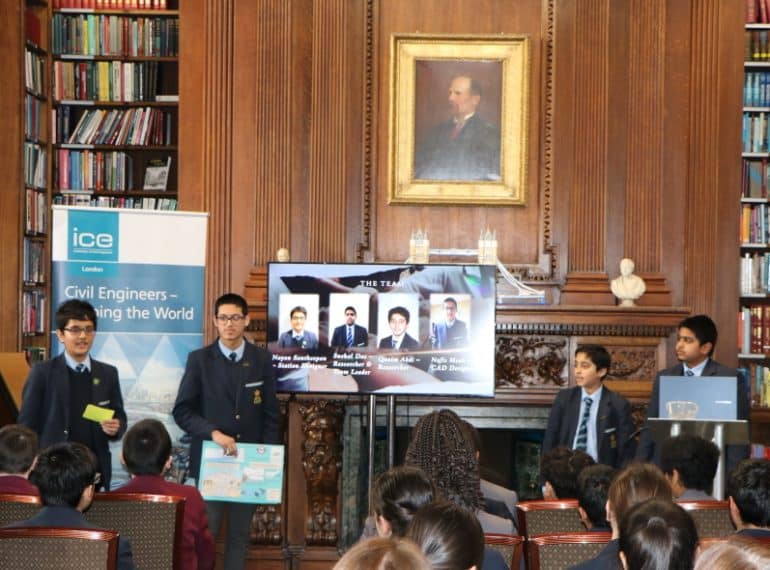
 The four Year 8 boys included no fewer than four different ways of reducing carbon emissions in their design for the new station connecting the Isle of Dogs to the O2 Arena in Greenwich.
The four Year 8 boys included no fewer than four different ways of reducing carbon emissions in their design for the new station connecting the Isle of Dogs to the O2 Arena in Greenwich.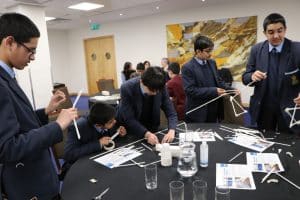 Jonathan Baggs, Director of ICE London, said that West Ferry was “very creative in its approach to energy generation and how it is used to operate the station”.
Jonathan Baggs, Director of ICE London, said that West Ferry was “very creative in its approach to energy generation and how it is used to operate the station”.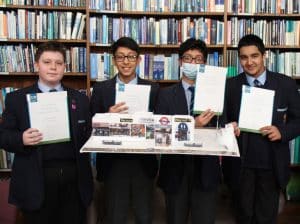 Kirsten Evans, a Technology technician and the organiser of the I Can Engineering Club at the School, congratulated all the boys who participated. “The club has allowed all 20 students involved to develop a better understanding of civil engineering’s role in society.”
Kirsten Evans, a Technology technician and the organiser of the I Can Engineering Club at the School, congratulated all the boys who participated. “The club has allowed all 20 students involved to develop a better understanding of civil engineering’s role in society.”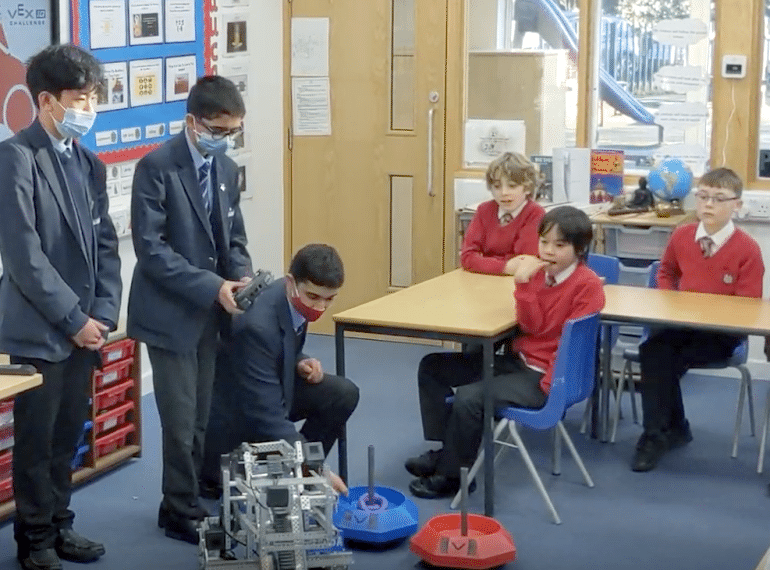
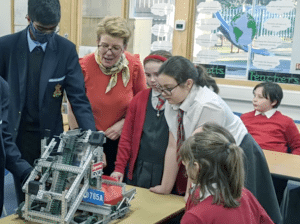 First, QE donated 3D printers to Northside Primary in North Finchley and Foulds School in Barnet, sending along a group of sixth-formers to help set the machines up and explain how they can be used.
First, QE donated 3D printers to Northside Primary in North Finchley and Foulds School in Barnet, sending along a group of sixth-formers to help set the machines up and explain how they can be used.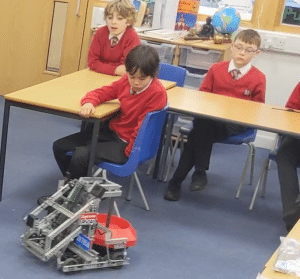 Mr Noonan accompanied senior boys from Team Hybrid – one of four senior QE robotics teams to have taken part in last year’s international VEX robotics finals – to Monkton Hadley.
Mr Noonan accompanied senior boys from Team Hybrid – one of four senior QE robotics teams to have taken part in last year’s international VEX robotics finals – to Monkton Hadley.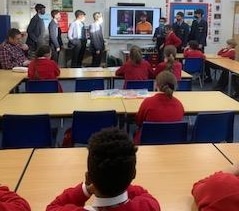 The children from Monken Hadley gave their own account in their school newsletter: “These robots were amazing…[The QE boys] play in many different competitions; the robot they are using…is so cool. It has a small conveyor belt, where rings go up, and it also collects big circles with poles on them.”
The children from Monken Hadley gave their own account in their school newsletter: “These robots were amazing…[The QE boys] play in many different competitions; the robot they are using…is so cool. It has a small conveyor belt, where rings go up, and it also collects big circles with poles on them.”